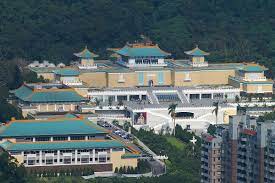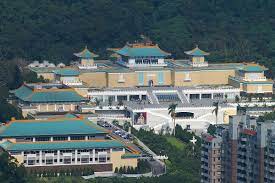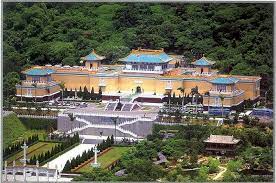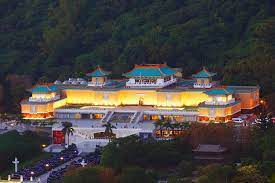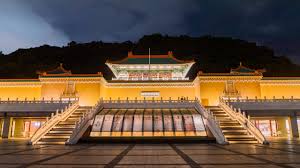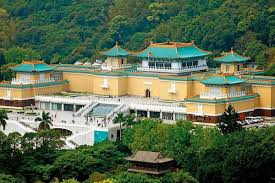The National Palace Museum is a renowned cultural institution located in Taiwan. It houses an extensive collection of Chinese art and artifacts that spans thousands of years of history. The museum is known for its invaluable treasures, historical significance, and its role in preserving and displaying important cultural heritage. Here are some key details about the National Palace Museum: Location: The National Palace Museum is situated in Shilin District, Taipei, Taiwan. Collection: The museum's collection is one of the largest and most comprehensive collections of Chinese art and artifacts in the world. It encompasses a wide range of items, including paintings, calligraphy, ceramics, sculptures, bronzes, jades, textiles, and more. The collection consists of over 700,000 items, with many pieces having imperial and historical significance. History: The museum's origins trace back to the establishment of the Palace Museum in Beijing, China, during the Qing Dynasty. To protect cultural treasures from the turmoil of war and political changes, a significant portion of the imperial collection was transported to Taiwan in 1949 during the Chinese Civil War, as the Republic of China government retreated to the island. Divided Collection: The National Palace Museum's collection is often referred to as the "divided collection" because it originated from the holdings of the Beijing Palace Museum, which remained on the mainland. The collection in Taiwan and the collection in the Beijing Palace Museum (now known as the Palace Museum) together represent a comprehensive overview of Chinese cultural heritage. Highlights: The museum's collection includes iconic pieces such as the Jadeite Cabbage with Insects, the Meat-shaped Stone, the Three Friends of Winter scroll painting, and countless other artworks of exceptional beauty and historical significance. Cultural Significance: The National Palace Museum is not only a repository of art and artifacts but also a place of cultural preservation and education. It serves as a bridge to connect visitors with China's rich history, culture, and artistic achievements. Facilities and Exhibitions: The museum features both permanent and temporary exhibitions that showcase various aspects of Chinese art and culture. Visitors can explore different galleries, thematic displays, and learn about the historical context of the exhibited items. Visitor Experience: The National Palace Museum is a popular destination for tourists and locals alike. Its picturesque location, cultural significance, and the opportunity to appreciate centuries-old masterpieces make it a must-visit attraction. Research and Education: The museum is involved in research, conservation, and educational activities related to its collection. It also organizes lectures, workshops, and events to promote understanding and appreciation of Chinese art and culture.
